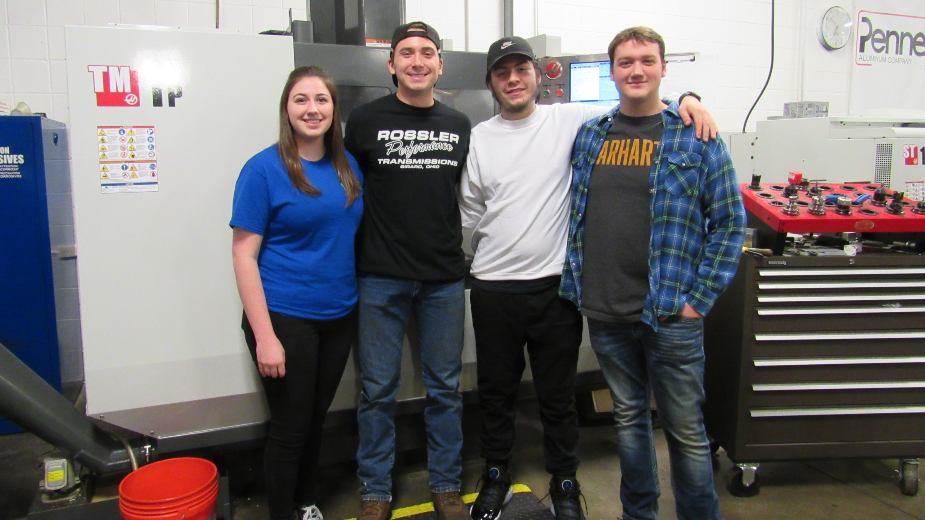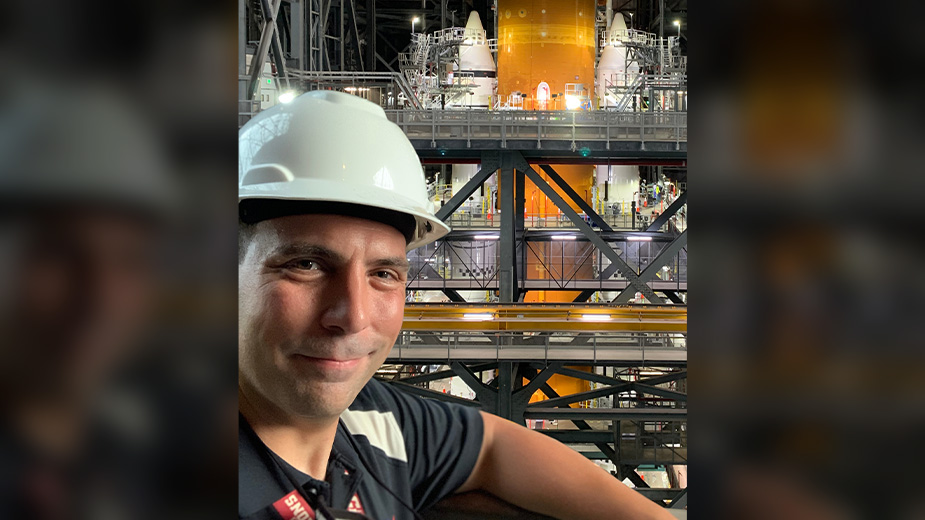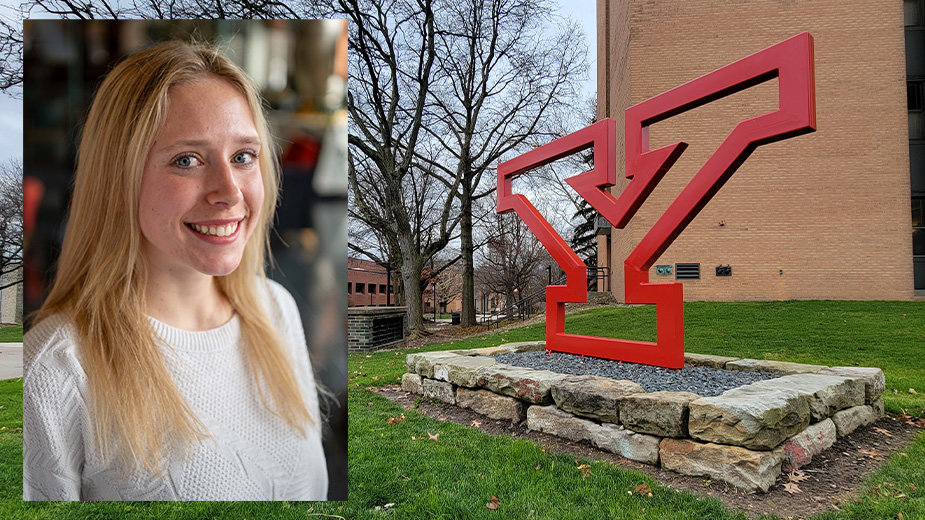MCCTC Opens the Door to ‘Multiple Career Pathways’
CANFIELD, Ohio — During an open house Thursday evening at the Mahoning County Career and Technical Center, Michael Stanko, president of the MCCTC board of education, asked the hundreds in attendance to raise their hands if they were graduates.
Some of them raised their hands high. The sight choked Stanko with emotion.
“About 48 years ago, I was here,” he said. “I sat there with my folks talking about what we needed to do, and I made the decision to come into the aviation program. No regrets.”
MCCTC was opened in 1972, and Stanko was part of the inaugural graduating class. Stanko welcomed those in attendance and spoke highly of the school and its staff, which helped him pursue a career in aviation — a dream he held since taking his first airplane ride at 7 years old, he said.
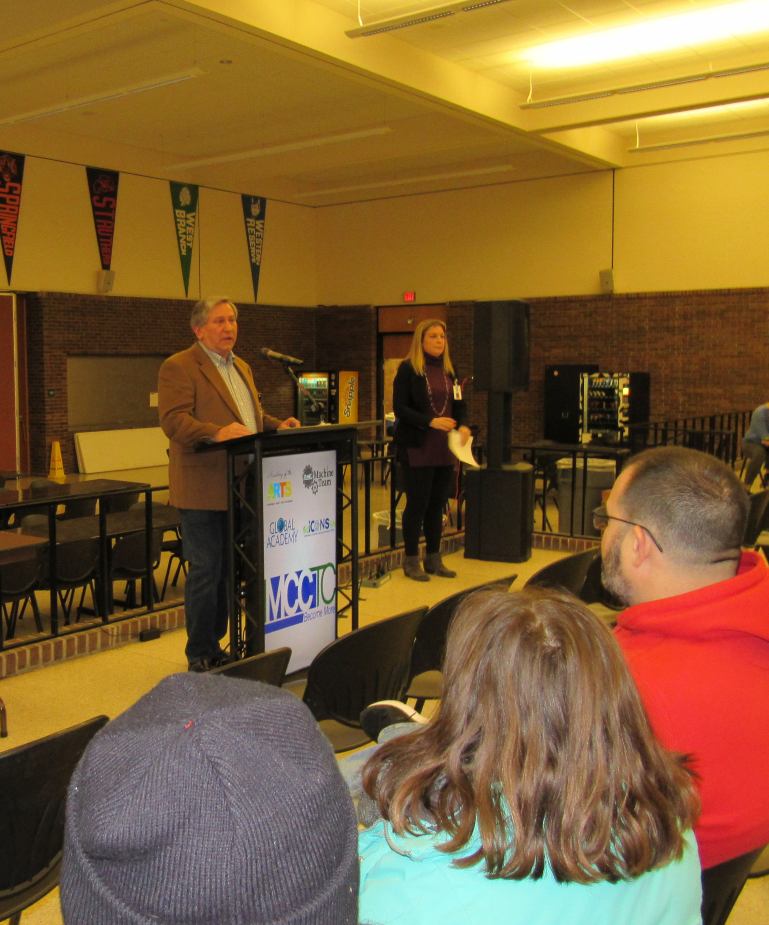
Prospective students and their families gathered at the school, 7300 N. Palmyra Road in Canfield, for the event. Students include high school juniors who can apply to MCCTC, as well as freshman and sophomores who can apply to the Valley STEM+ME2 Academy, which operates in the same building.
“We look at the families of our students as true partners in the educational process and we look forward to sharing with you tonight our beautiful facilities, state-of-the-art equipment, technology and, by far, the best staff in the Valley,” said Mara Banfield, career technical director and principal for Icons Academy and Machine Team Academy at MCCTC.
Career and technical education, Banfield said, is “a lifestyle, and it’s very different — and better, I might say — than education in the traditional setting.” Career and technical education gives students the opportunity to “be an active part in filling the skills gap” by working in-demand jobs with competitive wages in high school while obtaining highly technical and specialized skills, she said.
In Ohio, 95% of high school career and technical students graduate, she said. Last year, 99% graduated from MCCTC.
Of the students attending career and technical school, 39% require remedial-level coursework, compared to 49% of students “who come from a traditional setting,” she said.
“Ohio career and technical education students outperform other states in reading, science and math,” she said. “Career and technical education students are better prepared for college than non career and technical education students.”
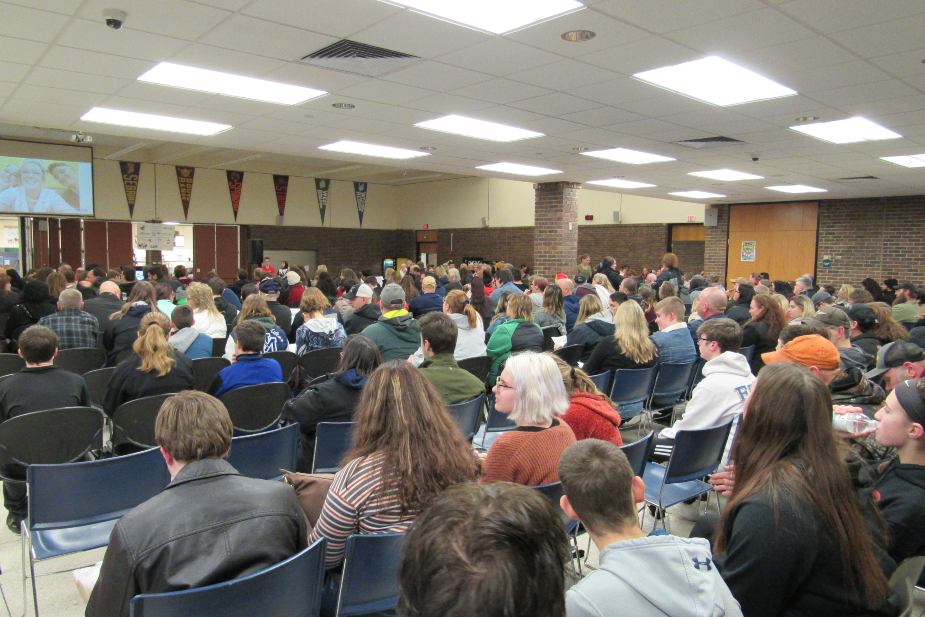
Last year, 99% of MCCTC graduates earned 12 or more industry credentials, and some obtained more than 50 points in “multiple career pathways,” she noted. On average, 95% of MCCTC graduates either enroll in college, enlist in the military or find employment in their chosen career field. MCCTC offers 15 college credit-plus courses, some of which are as early as ninth grade, she said.
Rebeca Suy Trigg, a sophomore at Austintown Fitch High School, attended the open house with her mother, Jenifer Trigg. Suy Trigg wants to get into aviation maintenance and eventually become a pilot, she said. She became interested in the career while traveling with her family.
“I’m originally from Guatemala, so we fly over there a lot,” she said. “Just being in the clouds and in airplanes, they’ve always fascinated me.”
After becoming a pilot, Suy Trigg wants to become a missionary pilot to help others, she said. The plan makes her mother proud.
“I’m really excited. I was a missionary too, and so I’m so proud of my daughter that she wants to do that,” Trigg said. “I feel so blessed that this program is right here. We literally live three miles away. How blessed we are to have this in Youngstown.”
MCCTC has one of the few aviation programs offered at the high school level, said Tristyn Fiorentini, a graduate of the aviation program. Fiorentini spoke with Suy Trigg and Trigg about the program, and said there are plenty of job opportunities in aviation. Fiorentini is interested in jobs just about anywhere, but said she would like to get a job at Pittsburgh International Airport.
“There’s people calling me left and right, and sign-on bonuses are crazy,” Fiorentini said. “Some girl just got a sign-on bonus for like, $7,000 I think. She had to move and they paid her rent for her.”

Many students come to MCCTC looking to find a job right out of high school, said Jessica Cene, marketing and job placement coordinator. In addition to promoting the school, Cene’s job is to ensure graduates find the jobs they’re looking for.
“Programs like advanced manufacturing, welding, any of our auto programs, cosmetology, culinary — those are the programs that I work very close with those students to help place them in the field,” she said.
Some of MCCTC’s programs are “100% job placement guaranteed,” she said. Those programs include welding, aviation and some of the auto programs. But the students have to want the job after completing the coursework, she said.
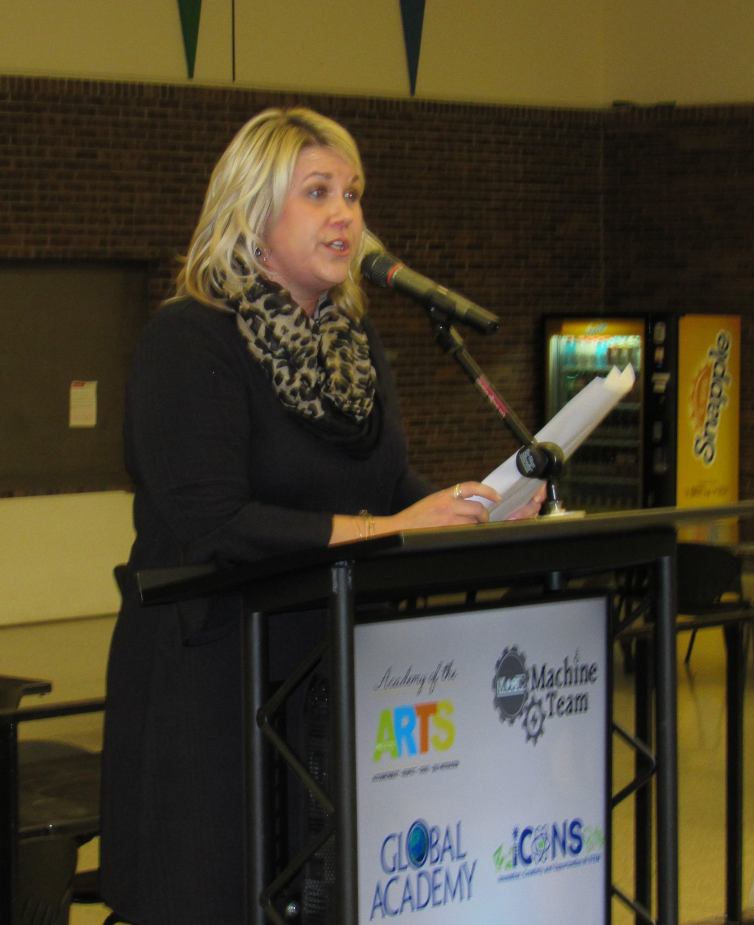
“I have employers call me every day looking for kids that can work,” she said. Last year, MCCTC boasted a 96% placement rate, she added. Cene follows up with graduates a year later to find out what they’re doing
“If they aren’t doing anything, we help find them a job.”
To identify available jobs, Cene says MCCTC works closely with the Mahoning Valley Manufacturers Coalition and the Youngstown/Warren Regional Chamber.
Noah Mitchell and Jonathan Tompkins graduated from MCCTC’s advanced manufacturing program last year and are both working locally: Mitchell works for City Machine Technologies Inc., and Tompkins for R&M Fluid Power Inc.
Mitchell wanted a career out of high school rather than attend college, “so I came here and learned a good trade,” he said. At City Machine, Mitchell rebuilds motors for steel mills and power plants, and does gearbox rebuilds.
His employer is looking into options for an apprenticeship for Mitchell to become a journeyman machinist. So far, Mitchell hasn’t had to take out any student loans.
“I don’t really have anything to worry about debt-wise for my education. So that’s nice,” he said. “There’s guys at work who are older than me who went and paid to do the same thing that I took in high school.”
Like Mitchell, Tompkins wasn’t big on traditional school and would struggle in his classes, he said. But he benefited from the hands-on education at MCCTC, saying it helped him maintain his focus. At R&M, Tompkins rebuilds and makes hydraulics.
“Even in the academic classes, they put what we do in our lab,” including math and science, he said.
Levi Baker, a senior, wasn’t sure what he wanted to do, but enrolled in advanced manufacturing for a future career or, at least, a fall back plan, he said. While attending high school, he works at Rossler Transmissions Inc., Girard, where he helps assemble transmissions for race cars, he said.
In advanced manufacturing, Baker earned certifications in advanced manufacturing, welding and others, including coding for industrial robotics, “so this really gave me a bunch of opportunities to see what I liked,” he said. Baker is enlisted in the Marines, so he’ll be gone “for at least four years,” but he might come back.
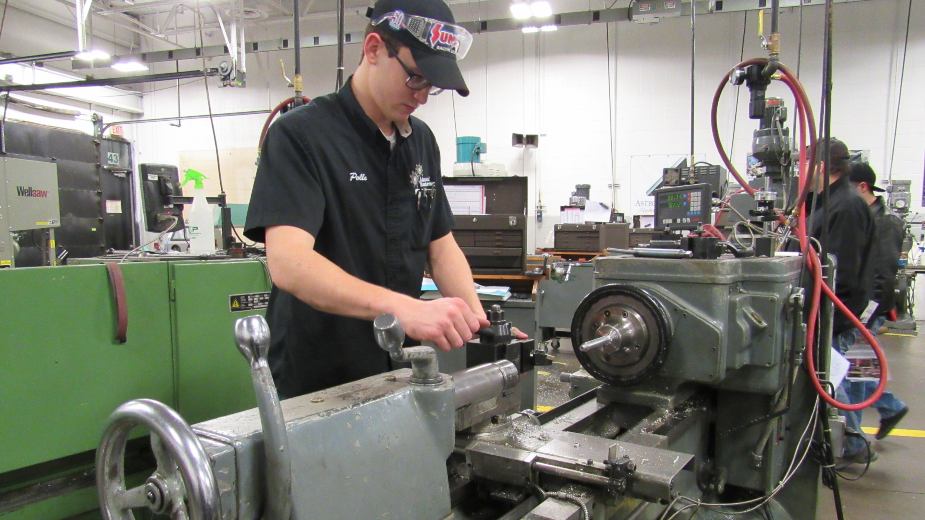
Another reason students attend MCCTC is to get a head start in college, Cene said. Programs at MCCTC like biomedical science, animal pre-veterinarian science, engineering, software engineering, cybersecurity, exercise science and physical therapy technicians require education beyond the career center, she said. The school provides those students with a head start.
“We can give them college credit classes as well as the hands-on experience here at the school,” Cene said.
Gabriella Gensamer is a senior in the biotechnology lab. She came to MCCTC because she wanted a nontraditional education with more room to personalize the experience, she said. Gensamer enjoys advanced classes, “and I knew that I’d be able to get a little bit more of that here than I would at my home school,” she said.
Gensamer finished her academic classes early. She attends MCCTC until 10 a.m., then finishes her day at Youngstown State University, where she plans to double major in electrical engineering and mathematics after high school, she said. She’ll start YSU with sophomore status, something that wouldn’t have been possible without MCCTC, she said.
“I’m graduating with over 40 credits of college done and paid for,” she said.
After college, she wants to work as an electric engineer for Ohio Edison or First Energy in Akron, either in Akron or one of the satellite offices locally, she said.
Having a school like MCCTC to provide an alternative to traditional education in the Mahoning Valley is important, said Stanko. After graduating from MCCTC in 1974, he would open his own business three years later. In 1989, Stanko purchased the Youngstown Elser Metro Airport in North Lima, where he has remained to today.
Whether a student wants to pursue college or wants a job out of high school, MCCTC “gives you a jump on the job placement, and will save you a tremendous amount of money,” he said. For example, enrolling in a traditional aviation program can cost in excess of $30,000, whereas MCCTC students receive the training for free.
And area employers look to MCCTC for workers, he said, himself included. Three of his employees who have worked for him for more than 20 years are MCCTC graduates.
“Ever since I’ve graduated, I know people in the auto industry that hire out of here. People in the diesel industry, the truck industry. I mean, career tech is a great way to go.”
Year-over-year, enrollment is up by some 100 applications, Cene said. MCCTC has 864 students, while Valley STEM has 210.
“We are really, really booming,” Cene said. “Career tech is getting out there that you get so much when you come. So many credentials, so many certifications. And so a lot of students are starting to find that out.”
During each enrollment period, MCCTC accepts 24 students for each program except for prenursing, which accepts 50 because there are two teachers for that program. The school starts placing students after the Feb. 21 application deadline. If certain programs still have openings after students are placed, the school contacts students on waiting lists to see if they would be interested in another field.
So far, MCCTC has received 500 applications from high school juniors alone, Cene said, so prospective students were encouraged to apply in a computer lab during the open house. Students who are accepted receive their letters of notification in mid-March.
Valley STEM has about 75 ninth graders applying and another 20 students from 10th grade, she noted. The academy is “very close” to building its waiting list for high school sophomores. Valley STEM accepts 200 ninth and 10th grade students — 100 from each grade — each enrollment period. For the last two years, Valley STEM has had waiting lists by March, she said.
“We have about five spots life,” Cene said. “We also have about 20 spots left for ninth grade.”
Popular programs at MCCTC include creative arts and design, cosmetology, criminal justice, as well as engineering and software engineering.
“Engineering is such a growing field,” Cene said. “And to be able to come here and get that base of that engineering terminology and to then go on to college really helps the kids.”
Students are selected based on when they applied, school attendance, GPA and whether they’re failing certain classes, such as English and math, which they must pass to be accepted to MCCTC, she said.
“It’s really hard if they need to make it up,” she said. “But we do allow for students that are deficient in math, English or science, to do it over the summer.”
Mahoning County students get first pick of the available spots, but students from other areas can still apply and be accepted into programs where there are openings. Last year, MCCTC had a student from Cleveland enroll in the aviation program.
Most of the funding for MCCTC programming comes from state monies used to pay for students’ tuition, Banfield said. The higher the socioeconomic status of the student, the lower the amount that’s allotted for the student, she said.
“Every kid has a dollar sign attached to their head that normally follows them to the district that they go to,” she said. “When they come here, we get 80% of the funding; 20% stays with the home district.”
MCCTC is enrollment driven, so the amount of funding it receives is based on the students who enroll. It also receives career tech-weighted funding to pay for operating certain expensive labs, such as aviation and machining. Currently, weighted funding is frozen, she noted.
Banfield didn’t disclose the total operating cost for those labs, but said some of the equipment in MCCTC’s manufacturing lab exceeds $100,000.
MCCTC also pays for student credentials, such as emergency medical technician, or EMT, which costs $1,300 per student.
“Our goal is to give all of the money back to equipment and the kids,” Banfield said.
Pictured above: Seniors Gabriella Gensamer and Levi Baker visit with graduates Jonathan Tompkins and Noah Mitchell in the advanced manufacturing lab during MCCTC’s open house Feb. 6.
Copyright 2024 The Business Journal, Youngstown, Ohio.
